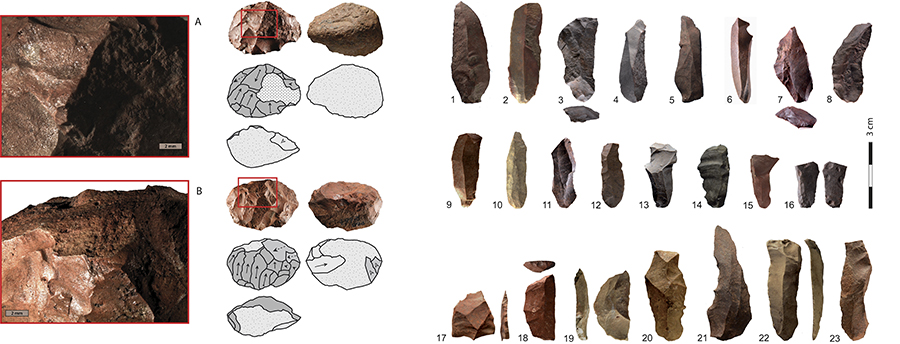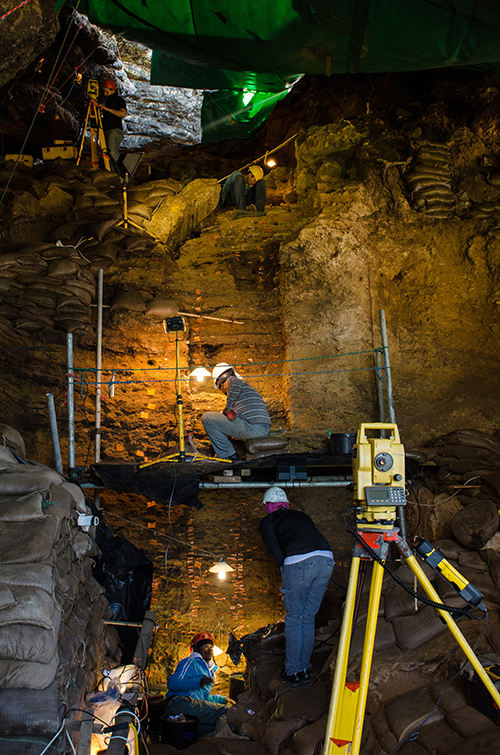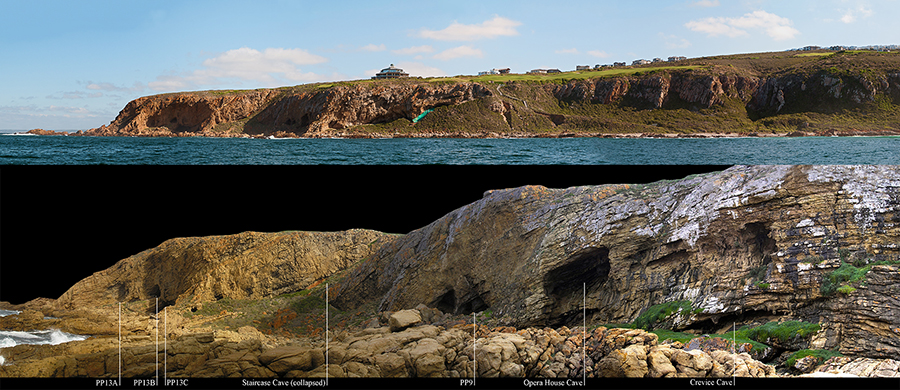There is a consensus that by about 300,000 years ago, there is a distinct shift in stone tool technology that is recognized by scientists as a shift from the late Acheulean to the Middle Stone Age (MSA). The MSA has flakes that are made on prepared cores and shows a shift away from hand axes as the primary tool type. A prepared core is a core where the core is carefully shaped so that it is ready, or prepared, to strike off a flake of a particular shape. One of the classic shapes was a point, and points can be used as projectile tips, knives, scraping tools, etc.
The types of points proliferate and begin to show regional and temporal patterns. Some points are unmodified flakes that have been knocked off, with great skill, from the prepared cores. These become a common flake form around 300,000 years ago. Others are carefully shaped with repeated flaking into a biface, and some appear to have received their final shaping with a technique called pressure flaking where the flakes are pushed off in a highly controlled manner. These bifacial points become common between 110,000 to 70,000 years ago. Some are long and thin and others short and squat. Some have bases that have been modified in ways consistent with hafting. All of this suggests an intense concern with the production of projectile points and knife blades.
A second stone tool form that begins to proliferate is called blades. Blades are very common after about 110,000 years ago. Blades are flakes that are twice as long as they are wide. Many blades are also made on prepared cores, and some of these cores take on regular forms so that they can produce many blades all rather similar in shape and size. Blades are also highly variable, some being long and others short. Evolving out of blade technology is microlithic technology, and in most cases microlithic technology involves the snapping of blades into smaller pieces, and then the blunting of one edge. Ethnographic and archaeological examples show us that the blunted edge was inserted into a groove in wood or bone, glued in along with other microliths, to create projectile point or cutting edges. Overall, there is a pattern of miniaturization over time, and this has been interpreted to be directed at lightening the weight of the projectile. The earliest evidence for microliths comes from a field site at Pinnacle Point, South Africa, dated to about 72,000 years ago.


